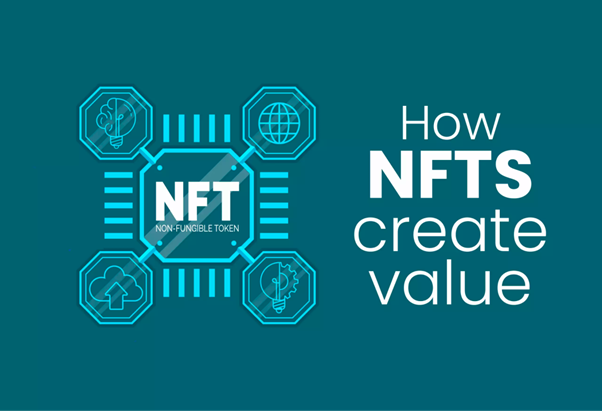In the ever-evolving landscape of digital assets, Non-Fungible Tokens (NFTs) have emerged as a revolutionary force, transforming the way we perceive and exchange value in the online realm. NFTs, based on blockchain technology, bring unparalleled uniqueness and ownership verification to the digital domain. This article delves into the intricate mechanics of how NFTs create value, exploring their impact on various industries and deciphering the factors contributing to their growing significance.
The Foundation: Understanding NFTs
At its core, an NFT is a cryptographic token that represents ownership or proof of authenticity of a unique item or piece of content, typically stored on a blockchain. Unlike traditional cryptocurrencies such as Bitcoin or Ethereum, NFTs are indivisible and cannot be exchanged on a one-to-one basis. This inherent uniqueness forms the basis of their value proposition.
Scarcity and Uniqueness
The concept of scarcity has long been a driver of value, and NFTs leverage this principle to the fullest. Whether it’s a digital artwork, music file, or virtual real estate, the scarcity of these digital assets is what makes them valuable. NFTs provide a mechanism for creators to designate a limited number of copies or even a sole edition of their work, imbuing it with a sense of exclusivity.
This is why you should come up with really good NFT ideas to make it profitable and interesting for buyers.
Ownership and Authenticity
NFTs utilize blockchain technology to establish indisputable ownership and authenticity. Each transaction is recorded on the blockchain, creating an immutable and transparent ledger. This decentralized ledger ensures that the ownership history of an NFT can be easily traced, eliminating concerns about counterfeit or unauthorized reproductions. This assurance of authenticity contributes significantly to the perceived value of NFTs.
Cultural Impact: Transforming Digital Ownership
NFTs have sparked a cultural shift in how we perceive and own digital content. For creators, this technology represents a paradigm shift, allowing them to retain greater control over their work, set terms for royalties, and engage directly with their audience. Collectors, on the other hand, gain a new form of digital ownership, where the concept of possessing a unique and verifiable piece of the digital realm becomes an intrinsic part of their identity.
NFTs in the Art World
Perhaps the most visible impact of NFTs has been in the art world. Digital artists can now tokenize their creations, allowing them to be bought, sold, and owned just like traditional physical artworks. The ability to prove authenticity and ownership through blockchain has democratized the art market, providing emerging artists with a global platform and enabling art enthusiasts to support their favorite creators directly.
Tokenizing Real-World Assets
NFTs are not confined to the digital realm; they have expanded into the tokenization of real-world assets. This includes real estate, luxury goods, and even shares of companies. By representing ownership on a blockchain, NFTs provide a secure and transparent way to trade and transfer these assets, unlocking liquidity and accessibility.
Digital Collectibles and Gaming
The gaming industry has embraced NFTs to create unique in-game assets and digital collectibles. Gamers can truly own and trade their in-game items, and developers can implement scarcity and exclusivity, enhancing the gaming experience. NFTs in gaming also open up opportunities for cross-game compatibility and interoperability, creating a virtual economy.
Factors Influencing NFT Value
Several factors contribute to the value of an NFT, making it a nuanced and dynamic market:
1. Creator Reputation
Renowned creators often command higher values for their NFTs due to their established reputation and fan base.
2. Scarcity and Editions
Limited editions or exclusive releases increase the scarcity of an NFT, driving up its perceived value.
3. Utility and Interactivity
NFTs with utility, such as granting access to exclusive content or experiences, tend to hold higher value.
4. Historical Significance
NFTs associated with historic moments or cultural phenomena may gain significant value over time.
5. Community and Social Validation
The involvement and endorsement of a vibrant community can contribute to the perceived value of an NFT.
Challenges and Criticisms
While NFTs have soared in popularity, they are not without challenges and criticisms. Environmental concerns related to the energy consumption of blockchain networks, the potential for copyright infringement, and market volatility are issues that continue to be scrutinized.
Conclusion: A New Era of Digital Value Creation
In conclusion, NFTs represent a transformative force in the digital landscape, creating value through scarcity, ownership verification, and cultural impact. From the art world to real-world assets and gaming, NFTs are reshaping industries and offering new possibilities for creators and collectors alike. As the technology matures and addresses its challenges, NFTs are poised to continue defining a new era of digital value creation, where ownership extends beyond the physical to the unique and verifiable realm of the blockchain.



